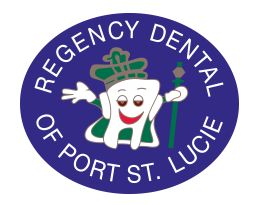Prosthodontics
Fixed Prosthodontics | Removable Prosthodontics

Fixed Prosthodontics
Crowns
Your prosthodontist may recommend a dental crown or cap to restore a decayed, damaged or cracked tooth. A crown can also be used to enhance discolored or badly shaped teeth.
Types of crowns available include:
- Metal
- Porcelain-fused-to-metal
- All-resin
- All ceramic or porcelain
Metal crowns are durable and require little removal of the tooth structure. The metallic color makes this type of crown a suitable option for restoring back molars. Porcelain-fused-to-metal crowns can be matched to the natural color of your teeth. However, they cause more wear and tear to opposing teeth. Compared to other types of crowns, all-resin crowns are least expensive, but they are more susceptible to fractures. All ceramic or porcelain crowns generally have the most natural appearance, but are often less durable.
The process for placing a permanent crown generally consists of two to three office visits. At the first visit, your prosthodontist may examine the roots of the tooth by taking X-rays of the tooth structure and surrounding bone. If decay is present or there is a possibility that infection or injury will develop in the pulp, a root canal treatment may be necessary.
Treatment plan for a patient receiving a crown
- Numbing the tooth to remove the decay in or around it.
- Re-shaping the tooth to provide an ideal fit for the crown. (The amount of tooth structure removed depends on the type of crown.
- Making an impression of your teeth in order to create a custom-made crown (usually takes one to two weeks).
- Making a temporary crown out of acrylic resin and fitting it onto the tooth during the interim period when the permanent custom-made crown is being fabricated.
- Applying the permanent crown (when received from the lab) by removing the temporary crown and fitting the permanent one onto the tooth.
After ensuring that the crown has the proper look and fit, your prosthodontist cements it into place.
Following the procedure, proper dental hygiene, including daily brushing and flossing, is necessary to maintain healthy, bacteria-free teeth, gums and crowns. This helps in the prevention of gum disease. Given proper care, your crowns can last a lifetime.
Bridges
If you are missing one or more teeth, you may find it difficult to chew or speak properly. Your prosthodontist can remedy these and other problems by placing a bridge. A bridge is a dental device that fills a space previously occupied by a tooth, and may be required to prevent:
- Shifting of the teeth, which can cause bite problems (occlusion) and/or jaw problems and resultant periodontal disease.
- Bridges preserve the integrity of existing teeth and help maintain a healthy, vibrant smile.
Bridges can be manufactured from porcelain, gold, alloys or a mixture of these materials.
Three main types of bridges:
- Fixed bridge- this is the most common type of bridge. It consists of a pontic (filler tooth), which is attached to two crowns that fit over the existing teeth and hold the bridge in place.
- The “Maryland” bridge, also known as a resin-bonded bridge, is commonly used to replace missing front teeth and consists of a filler that is attached to metal bands that are bonded to the abutment teeth. The metal bands consist of a white-colored composite resin that matches existing tooth color. This is the least expensive type of bridge.
- The Cantilever bridge is often used when there are teeth on only one side of the span. A typical three-unit cantilever bridge consists of two crowned teeth positioned next to each other on the same side of the missing tooth space. The filler tooth is then connected to the two crowned teeth, which extend into the missing tooth space or end.
Practicing good oral hygiene and seeing the dentist regularly ensures the longevity of your bridge.
Inlays/Onlays
Inlays and onlays are indirect restorations. They are a great alternative to traditional metal fillings, primarily because less of the tooth structure needs to be removed. Inlays and onlays are suitable for treating mild to moderate decay, and can be used to restore a cracked or fractured tooth if the damage is not extensive enough to require a crown.
Generally, inlays are small restorations that fit within the contours of the biting surface of a tooth, while onlays cover a portion or the entire chewing surface.
Inlays and onlays can be made from porcelain, gold or composite resin. Once fabricated, they are securely bonded to the tooth.
Advantages of inlays and onlays:
- Since they can be fabricated from tooth-colored materials, inlays and onlays are aesthetically pleasing. Unlike traditional metal fillings, the restoration is virtually invisible.
- Less removal of the tooth structure is required to achieve optimal results.
- They do not cause excessive wear and tear to opposing tooth structures.
- Inlays and onlays prevent the need for more significant treatment in the future.
The process for placing inlays and onlays generally requires two or more office visits. Initially, once the decay is removed, your prosthodontist will take an impression of the tooth. A temporary restoration is placed until the custom made inlay/onlay is manufactured in a laboratory.
Following a proper oral hygiene regimen daily, ensures the success and longevity of your new restoration.
Implants
If you are generally healthy and have healthy gums and an adequate jawbone to support an implant, your prosthodontist may recommend implant treatment as a suitable option for replacing missing teeth.
Originally developed half a century ago by a Swedish scientist named Per-Ingvar Branemark, implants initially arose from the patient’s need to secure loose-fitting dentures. Engineering and enhancements to the implant have enabled dentists to expand its’ usefulness, including the replacement of missing or lost teeth.
Implants are made of titanium and other biologically compatible materials.
Today, implant techniques offer a broad range of replacement solutions including:
- Single Tooth Replacement
- Anterior Replacement
- Posterior Replacement
- Full Upper Replacement
Types of Implants
There are three main types of implants:
- The root implant
- The plate form implant
- The subperiosteal implant
The root implant is by far the most popular. It is a highly effective treatment option; enabling your prosthodontist to place a tooth that mirrors the shape and size of your natural tooth. This procedure is generally a three-part process. First, your prosthodontist will surgically place the implant or artificial root into the jawbone following local anesthesia. It will take approximately three to six months for the implant to heal and fuse with the bone. This process is known as osseointegration. Once this happens, a post will be attached to the implant. Once the gum tissue heals around the post, the implant is fitted with a crown.
The plate form implant is ideal in situations where the jawbone is so narrow that it could not adequately support a root implant. The plate form implant is flat and long, so it can anchor into thin jawbones. It is inserted the same way as a root implant. In certain cases, the plate form implant is immediately fitted with the restoration without waiting for the healing process to run its course.
The subperiosteal implant is used when the jawbone has receded to the point where it can no longer support a permanent implant. There are two methods for placing this custom made implant.
Implant as a Treatment Option
If the missing tooth space has no surrounding teeth, the dentist may decide an implant is the most appropriate treatment choice or option.
The treatment plan for a bridge usually requires two visits to your prosthodontist. Specifically, it involves:
- Numbing the surrounding teeth with a local anesthetic and cleaning plaque or decay.
- Reducing the teeth so that the crowns can be fitted.
- Making a mold or impression of the teeth in order to create a customized permanent impression (this generally takes 1-2 weeks).
- Fitting the patient with a temporary bridge until the permanent bridge is ready for placement.
- Removing the temporary bridge and replacing it with the permanent one.
- Adjusting the bridge for the proper bite and fit and permanently bonding it into the mouth.
Post Implant Care
Although proper oral hygiene is always recommended for maintaining good dental health, it is especially important when a patient has received a dental implant. Bacteria can attack sensitive areas in the mouth when teeth and gums are not properly cleaned, thus causing gums to swell and jaw bones to gradually recede. Recession of the jawbone will weaken implants and eventually make it necessary for the implant to be removed. Patients are advised to visit their dentists at least twice a year to ensure the health of their teeth and implants. Dental implants can last for decades when given proper care.
Veneers
Veneers are a great aesthetic solution to enhance your smile that may even help you avoid orthodontic treatment. Veneers can be used to make subtle improvements to your smile. In most cases, veneer application is completed in only two office visits.
Veneers are thin, semi-translucent “shells” typically attached to your front teeth. Veneers are customized from porcelain material and permanently bonded to your teeth. Veneers are a great alternative to otherwise painful dental procedures to improve the appearance of your smile.
Common problems that veneers are used for:
- Spaces between the teeth
- Broken or chipped teeth
- Unsightly, stained or discolored teeth
- Permanently stained or discolored teeth
- Crooked or misshapen teeth
Removable Prosthodontics
Replacing your missing or damaged teeth will benefit not only your appearance but your overall health. Using state-of-the-art technology and updated materials, dentures can now be custom designed to look more natural and feel more comfortable.
It may take some time to adjust to your dentures. Speaking and eating may feel different at first, but these regular activities will resume normally once you are accustomed to your dentures.
Complete Dentures
Complete dentures are artificial, removable replacements for the natural teeth of the upper or lower jaw or both.
- Upper dentures
Upper dentures are held in place by a vacuum created between your appliance and the palate of your mouth. - Lower dentures
Lower dentures are horseshoe-shaped to accommodate the tongue, and, due to lack of suction, are often held in place by implants placed in the jaw for support.
Partial Dentures
Partial dentures are removable appliances that replace missing teeth by attaching via a metal framework to your natural teeth.
Caring for your removable appliances:
Proper denture care is essential to the durability of your dentures and the overall health of your mouth.
- Brush your dentures daily with a soft-bristled tooth brush. (Don’t forget to brush your gums and tongue as well.)
- While not being worn, keep your dentures in denture solution and/or water (not hot) to prevent warping.
- Handle with care and keep out of the reach of children and pets.
- If your dentures become loose, chipped, break or cracked, see your prosthodontist.
